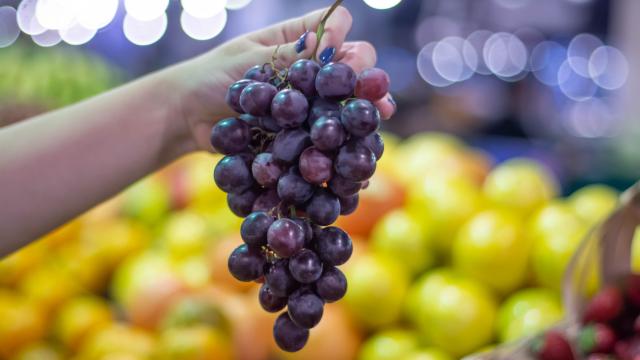For a large portion of the world, it is grape season, a vastly underrated fruit season. Whether you’re partaking of the season’s more unusual grape offerings or simply enjoying a standard green table grape, you should pick, wash, and store them with care to maximise their lifespan, and your enjoyment while eating them.
How to pick ‘em
Grapes are technically a berry, but they are (luckily) one of the least fragile berries around. Still, there are some measures you can take to ensure you get the best-tasting, longest-lasting bunch of grapes at the market.
First, look at the stem. It should be green and flexible, and the grapes should be firmly attached and not look shriveled or moldy where they meet the it. Next, look at and feel the grapes. You want ‘em firm and plump and — again — attached to the stem. Loose, mushy grapes bouncing around in the bottom of the bag can encourage mould and rot, and you don’t want the subpar fruit to contribute to the weight of the bag (and price of the bunch). Red and black grapes should be even, rich, and dark in hue; green grapes should have a yellowish tint. They should also appear to be coated in a fine, kind of silvery dust; this the called the “bloom,” and it protects the grapes from insects and bacteria and seals in their moisture. The bloom starts to fade once the grapes are picked, so the more bloom, the fresher your grapes.
How to store ‘em
Most grapes are sold in well-ventilated bags, which are actually the perfect storage container for your grapes. If you buy your grapes in bulk, you may have to bring them home in paper or standard plastic bags, neither of which is ideal for storing grapes. If this sounds like a scenario you have faced or will be facing, simply transfer them to a well-ventilated container, like a colander with a clean dish towel draped over it or not-quite-closed freezer bag. Keep your grapes in your crisper drawer, which is humid but not wet, and keep them away from any produce with a strong odor (like that half an onion you need to use up).
Though humidity is a good thing for your grapes, actual droplets of water are the enemy, as excess moisture can encourage mould growth and rot, so don’t wash them until you are ready to eat them. Just rinse them under cold water (no soap or bleach, please!) and place them on a paper towel to absorb any drips before serving.
How to eat ‘em
To enjoy a grape, simply put it in your mouth and chew. If you want to get fancy, you can lacto-ferment them with a little salt to make a fizzy grape pickle. If you’ve missed their prime eating window and they’re starting to get a little mushy, do not fret (or throw them out). Freezing them can firm them up into an icy little treat, or you could roast them into a cheese plate accoutrement, or sous vide them with a lamb neck. If you need another fun grape-related activity, you could always try and see how many you can fit into your mouth at one time, though honestly, this is a dangerous game you should not play. (My record is 23.)

Leave a Reply
You must be logged in to post a comment.